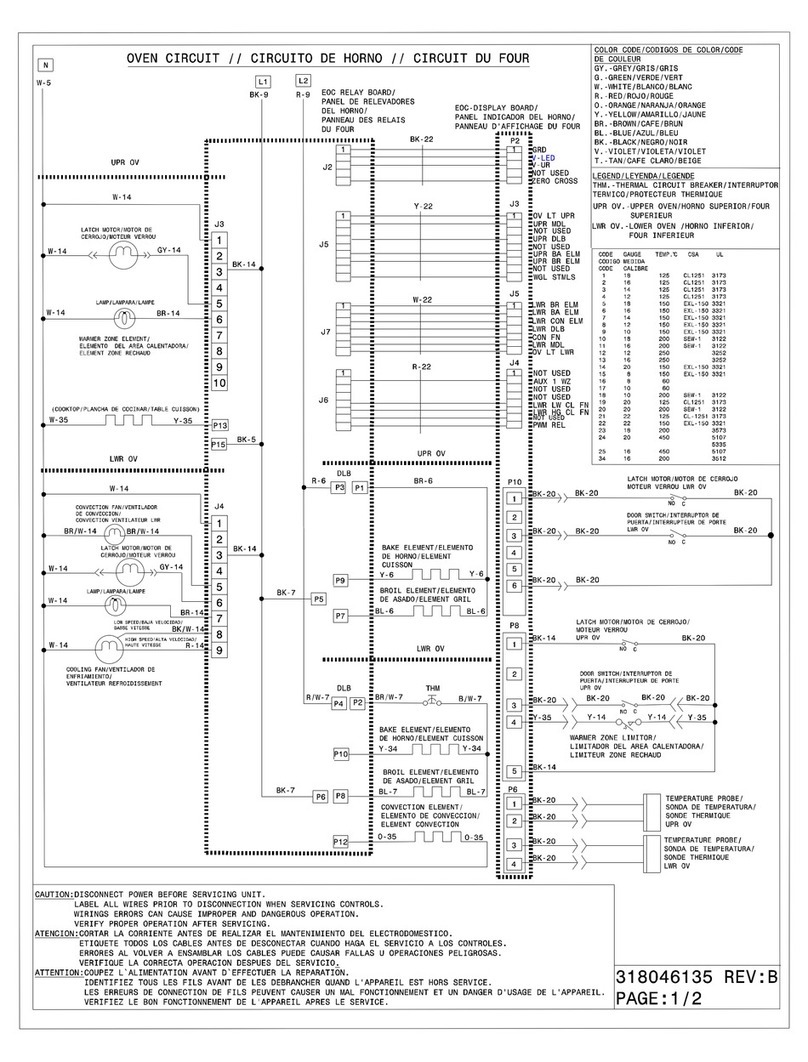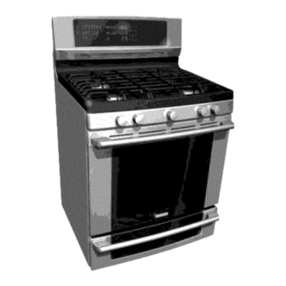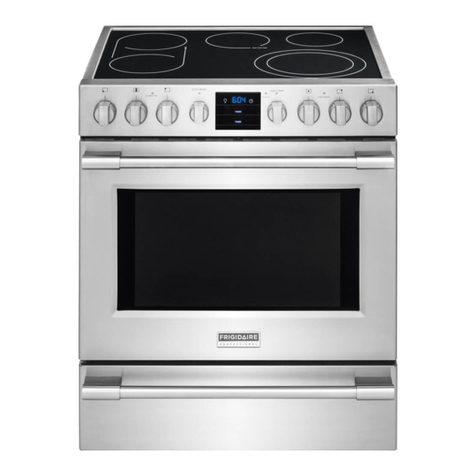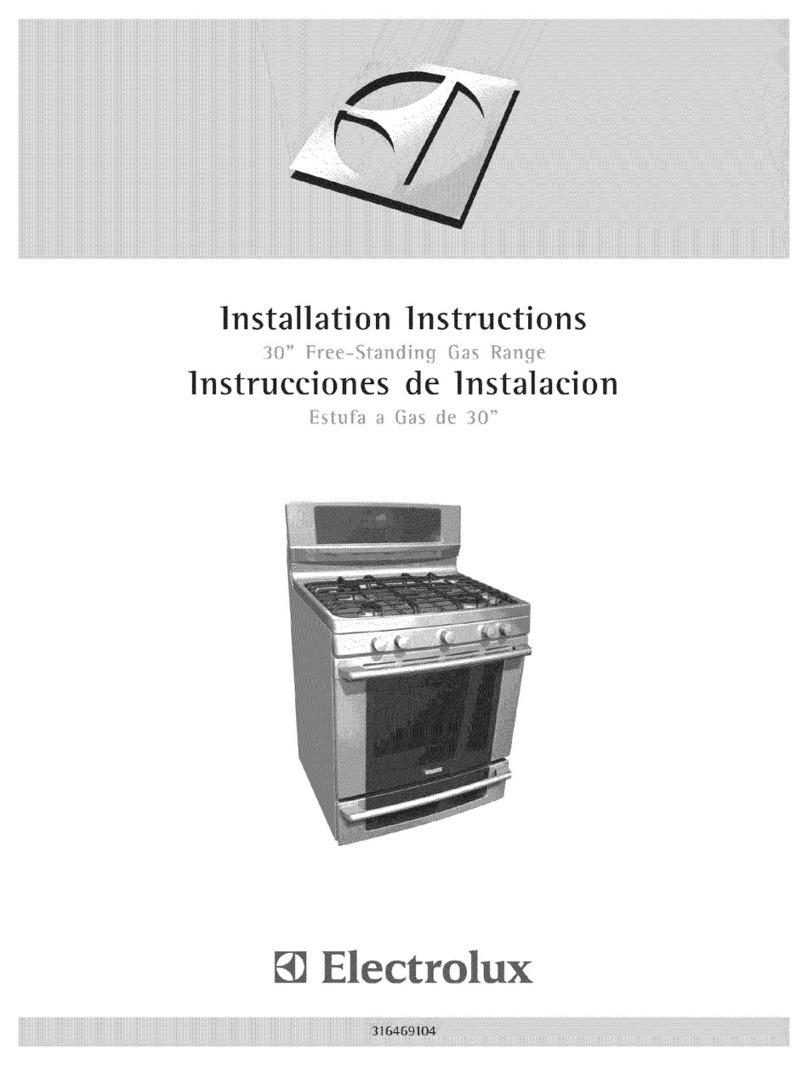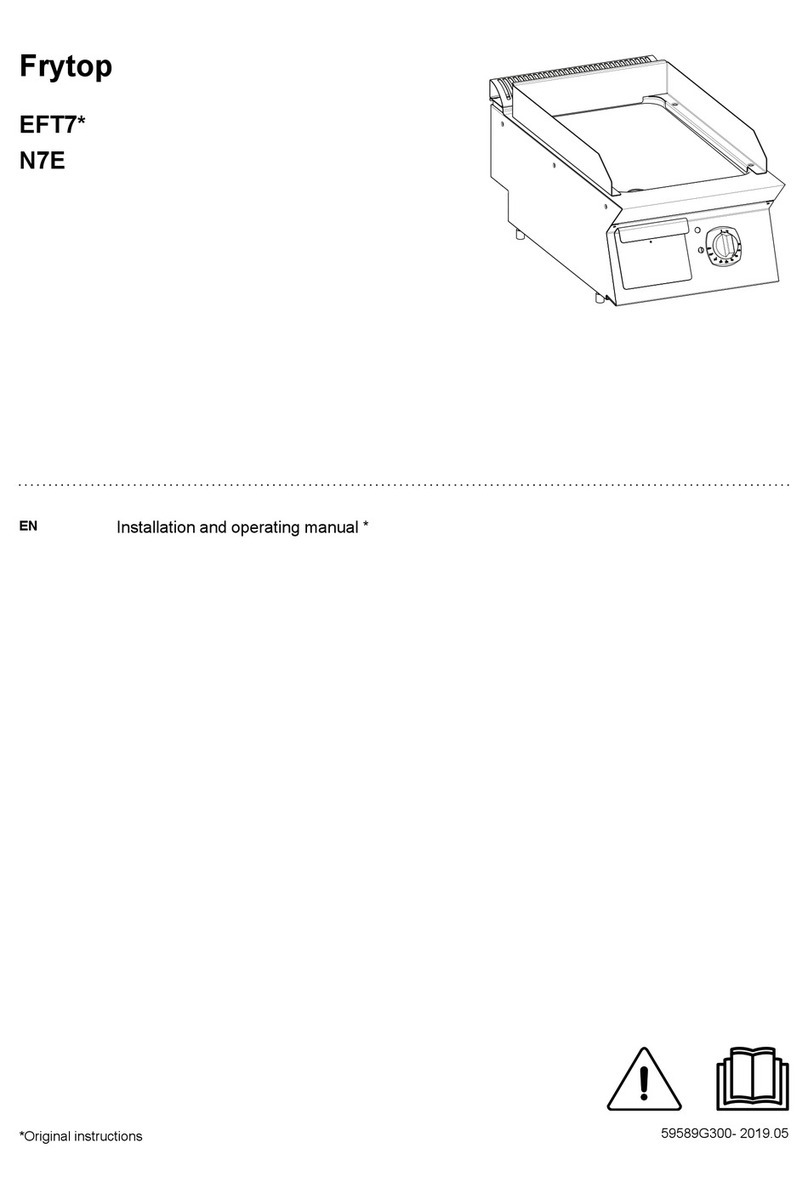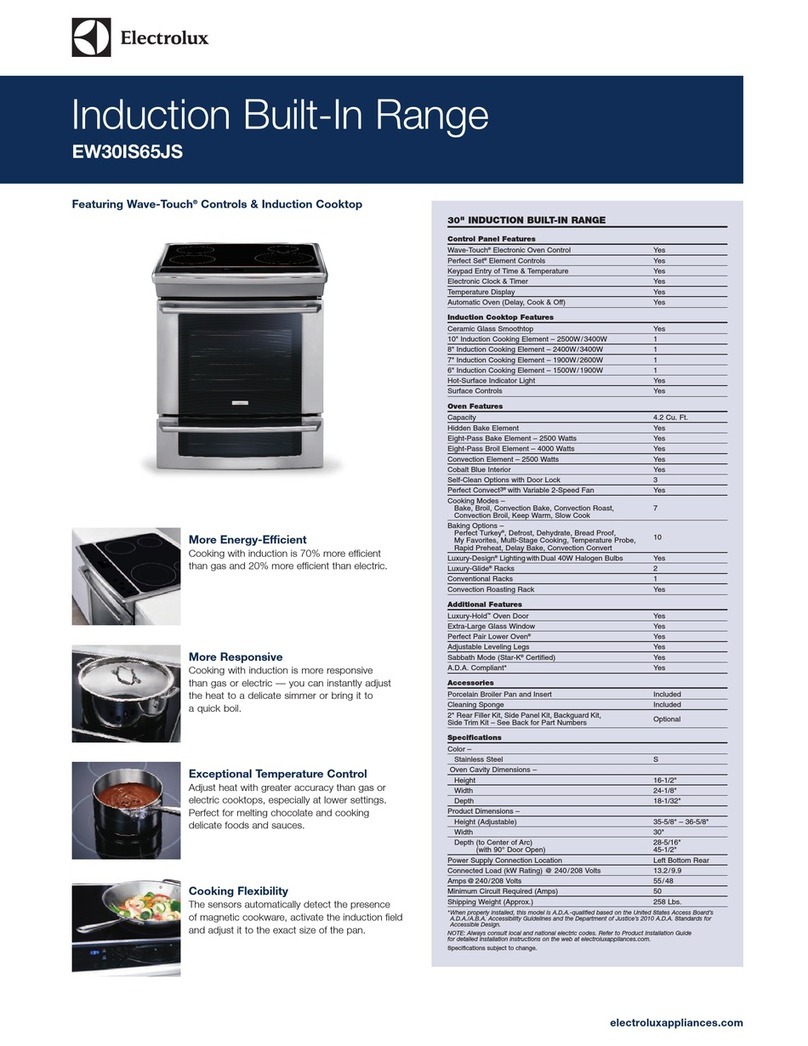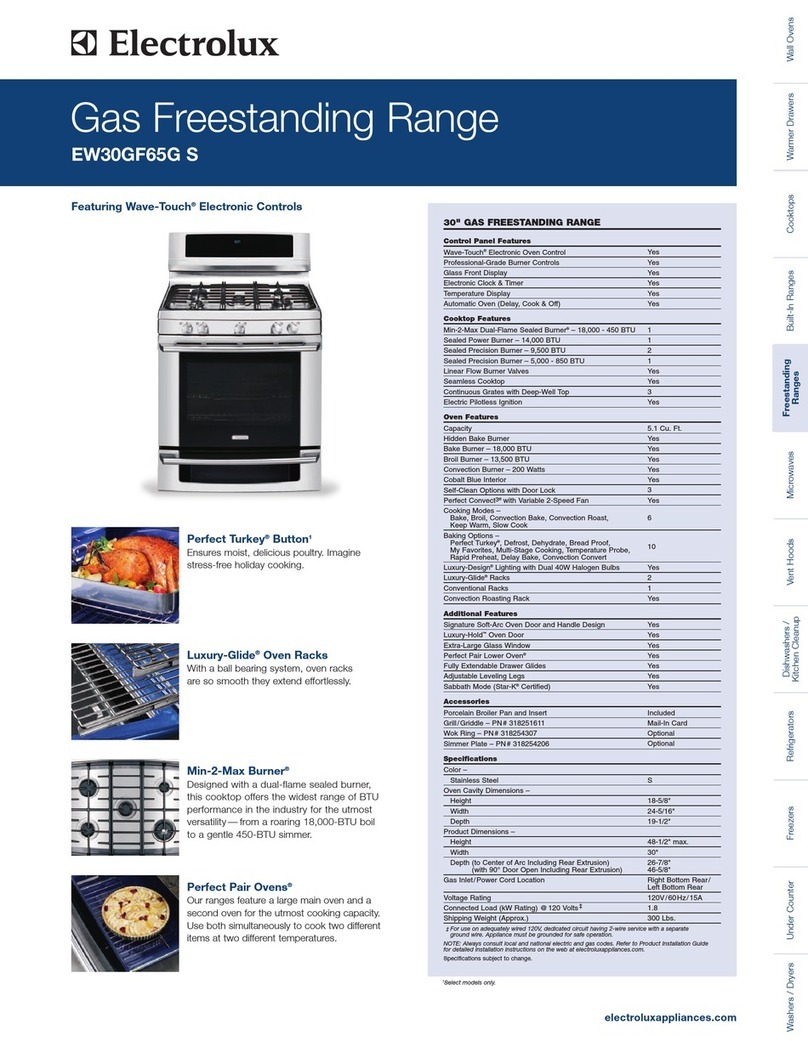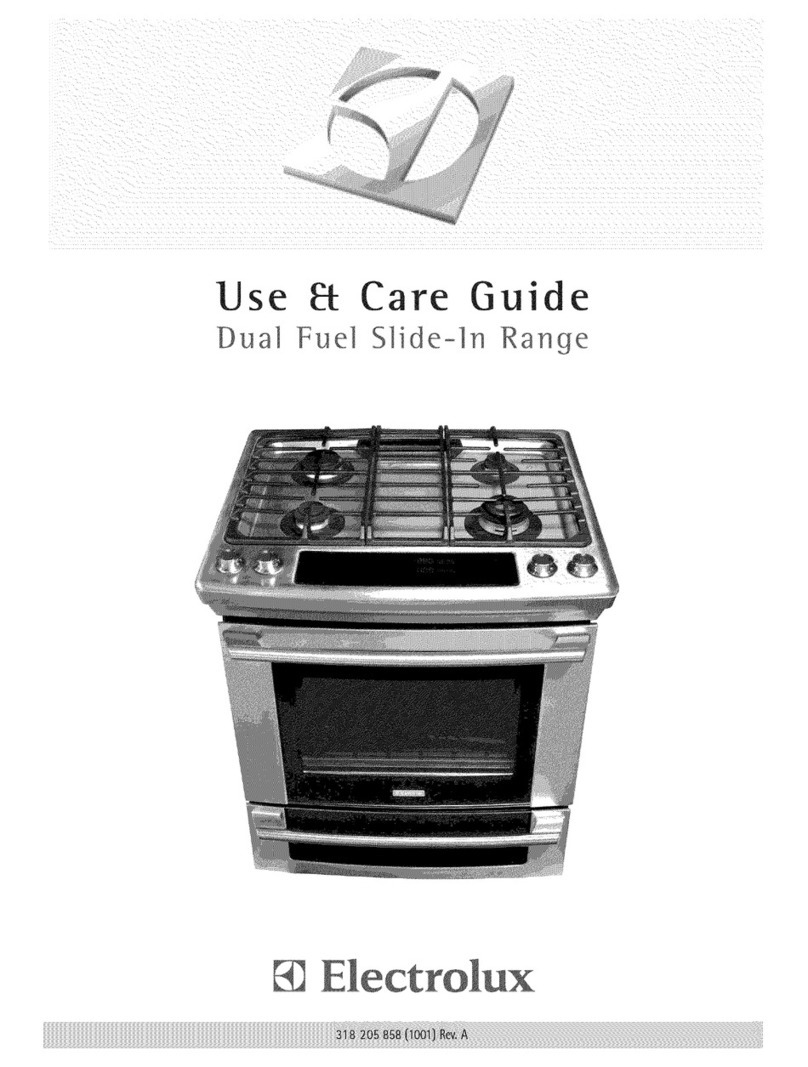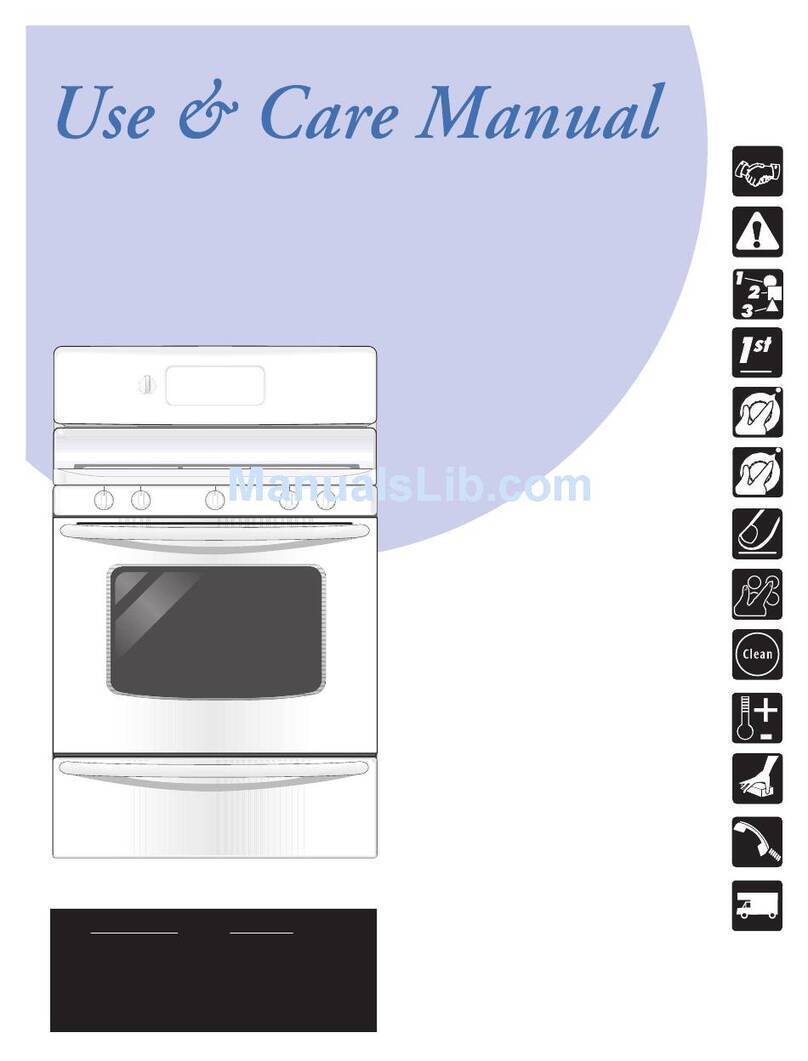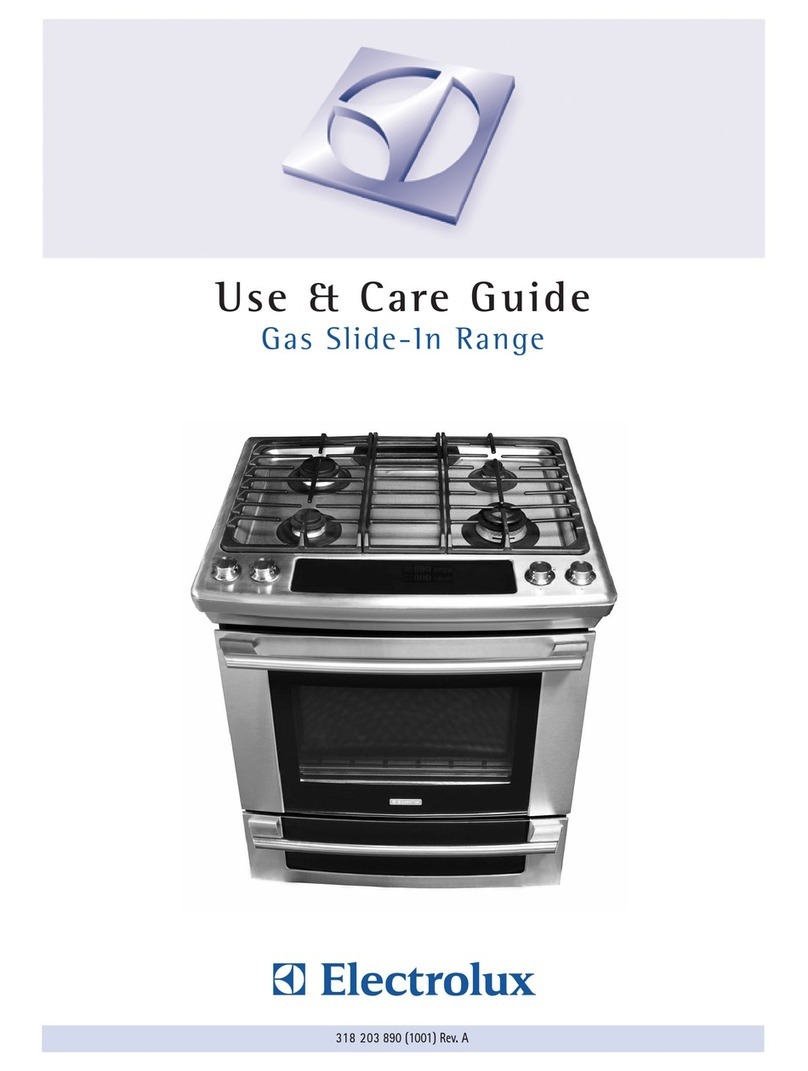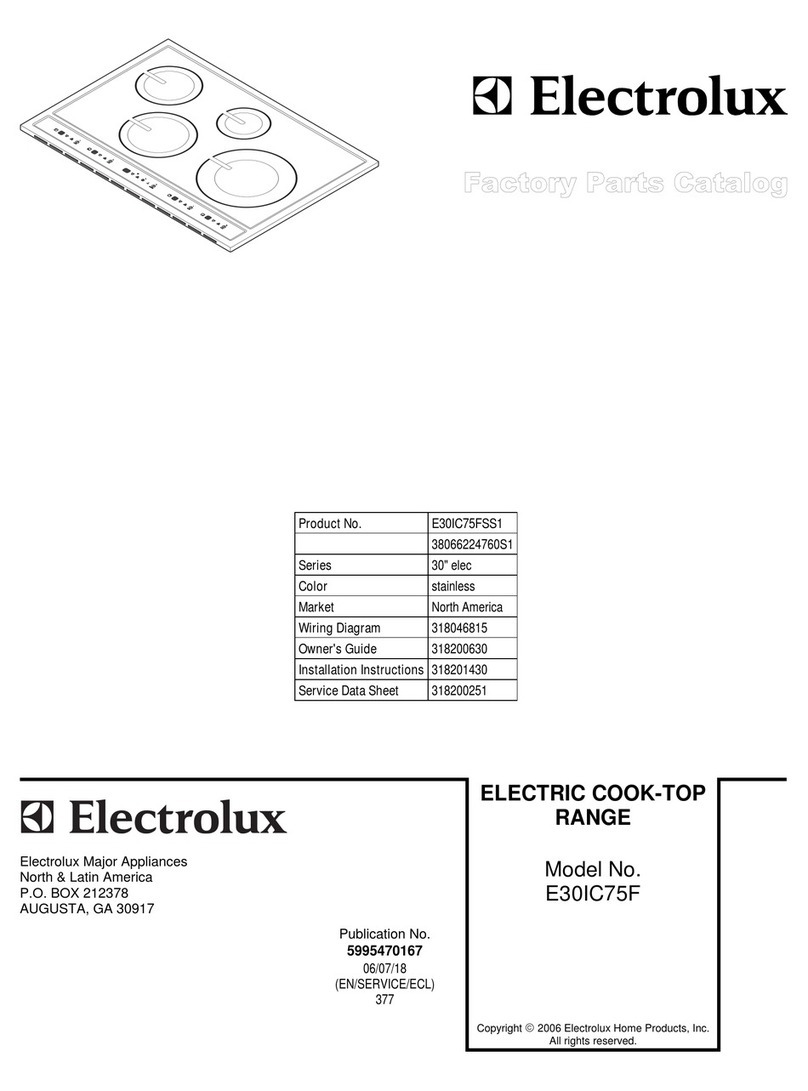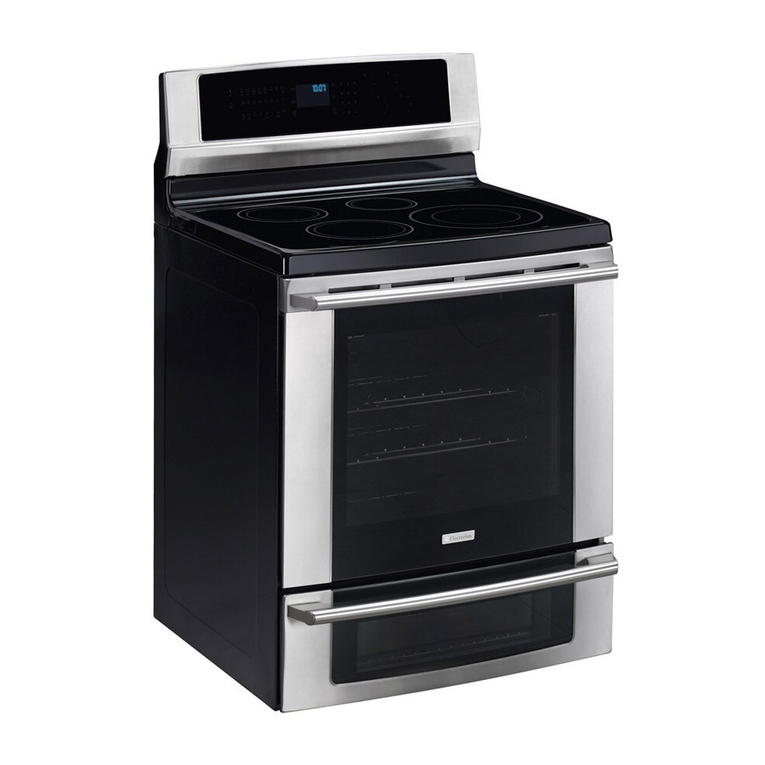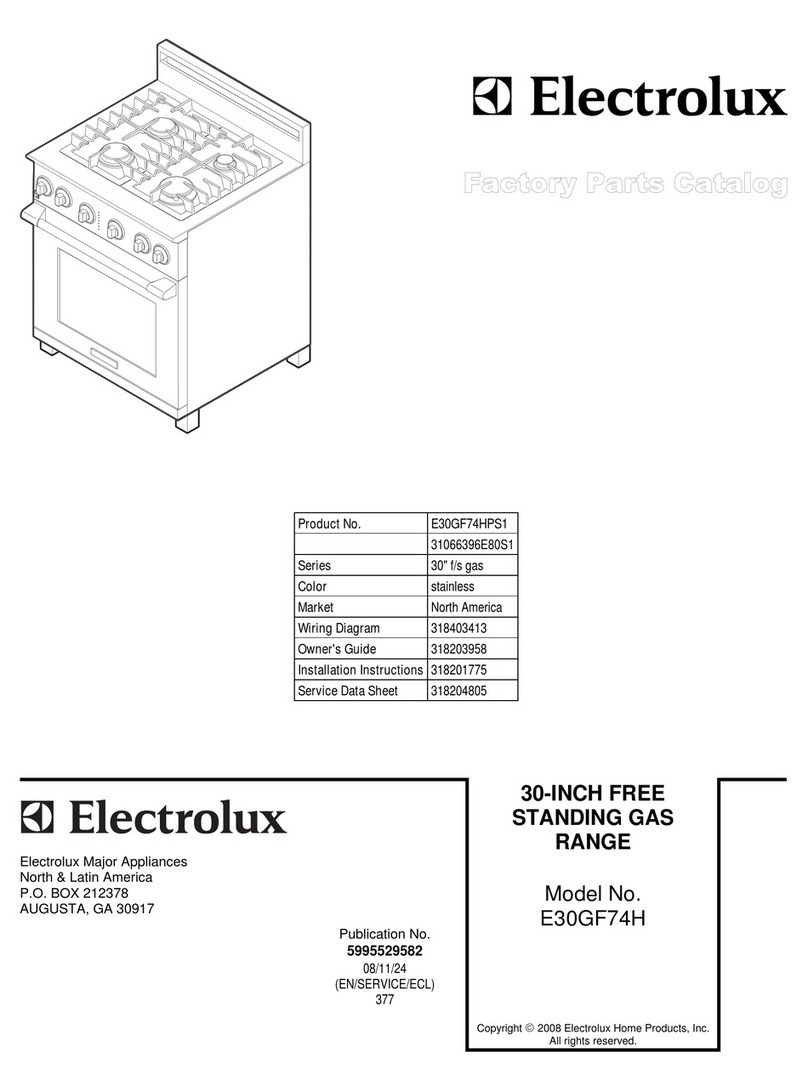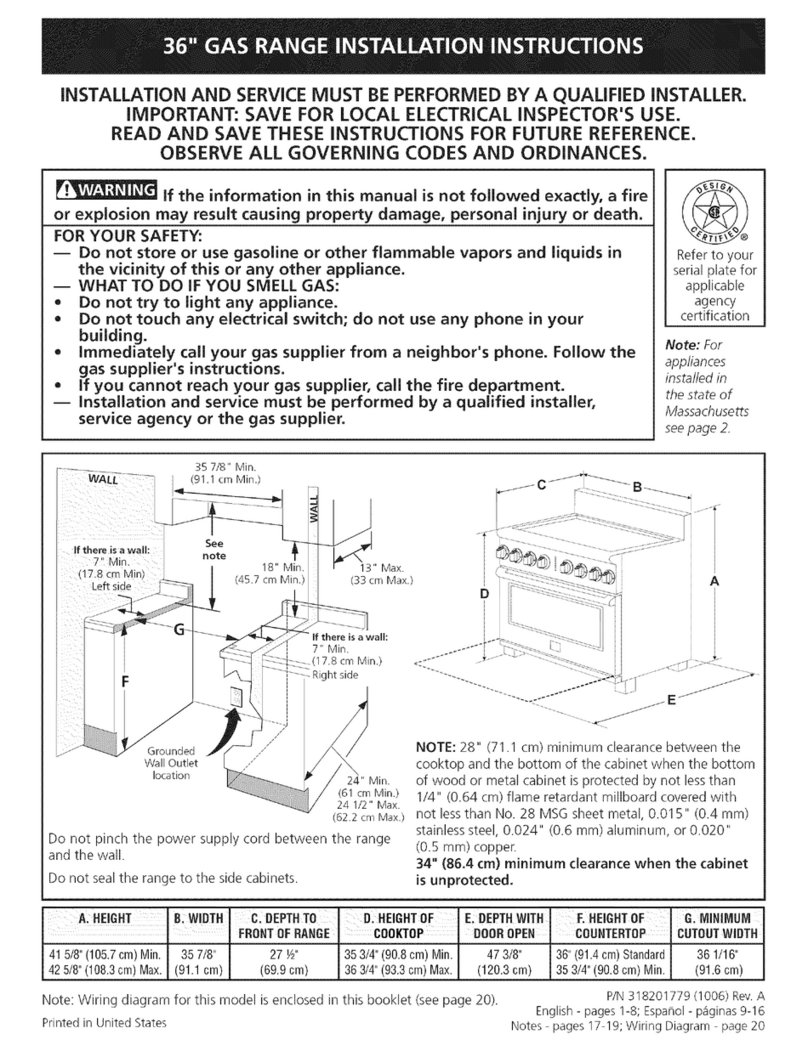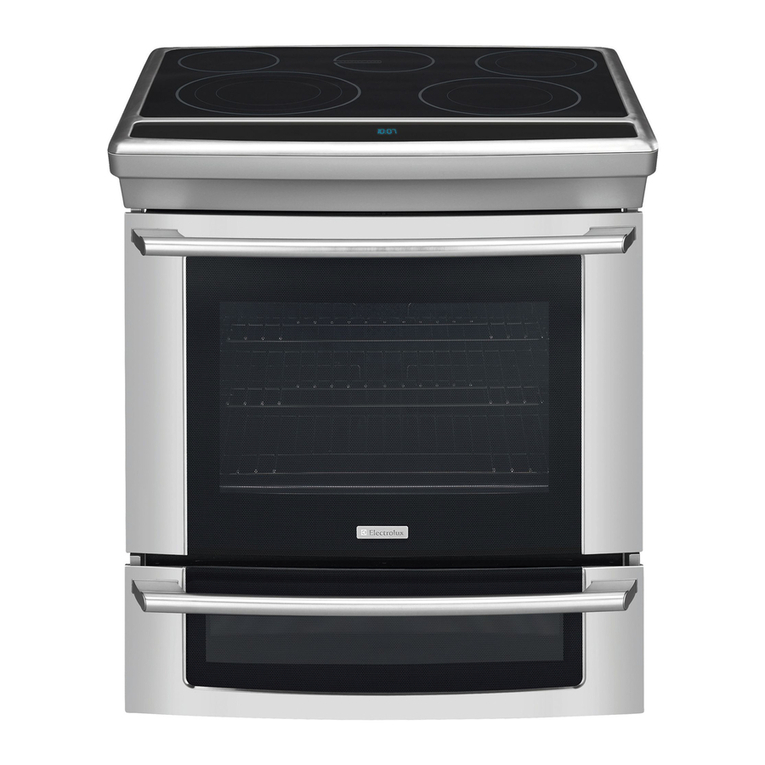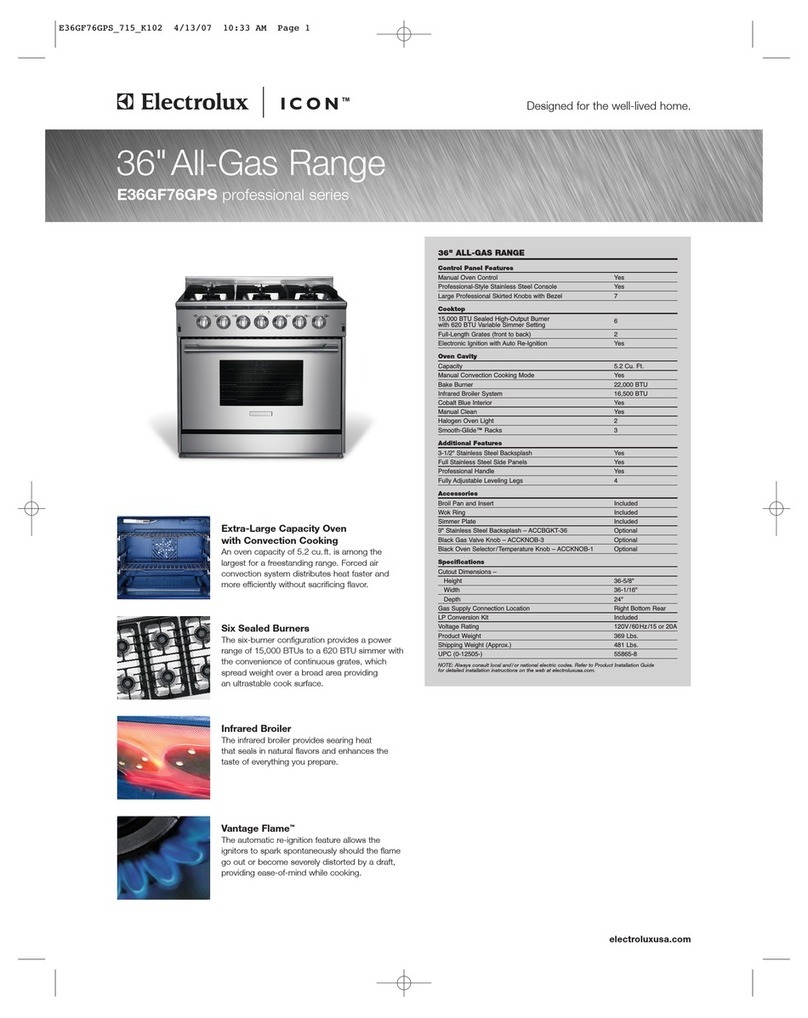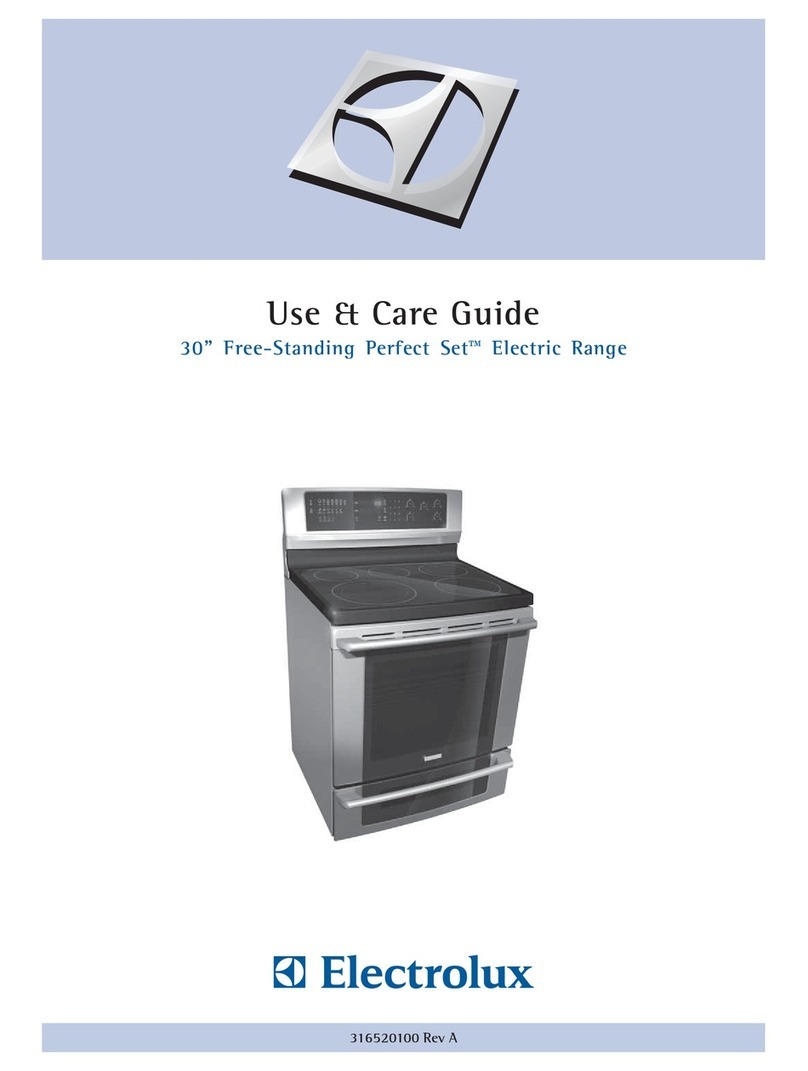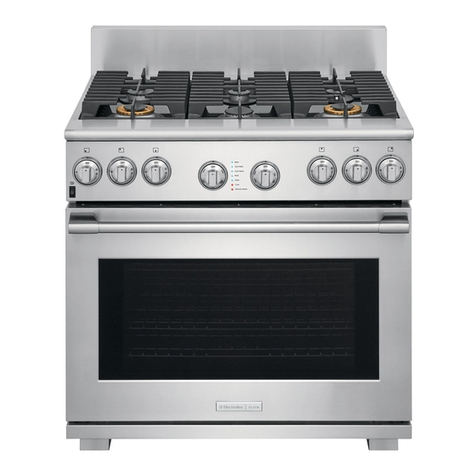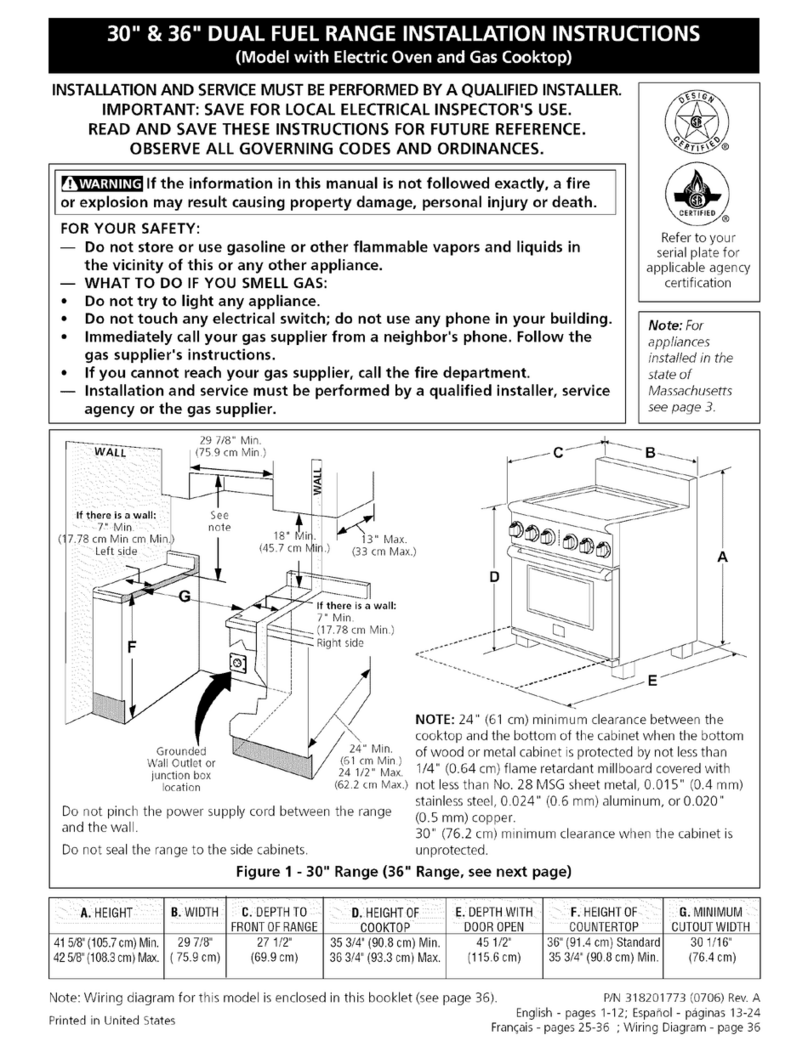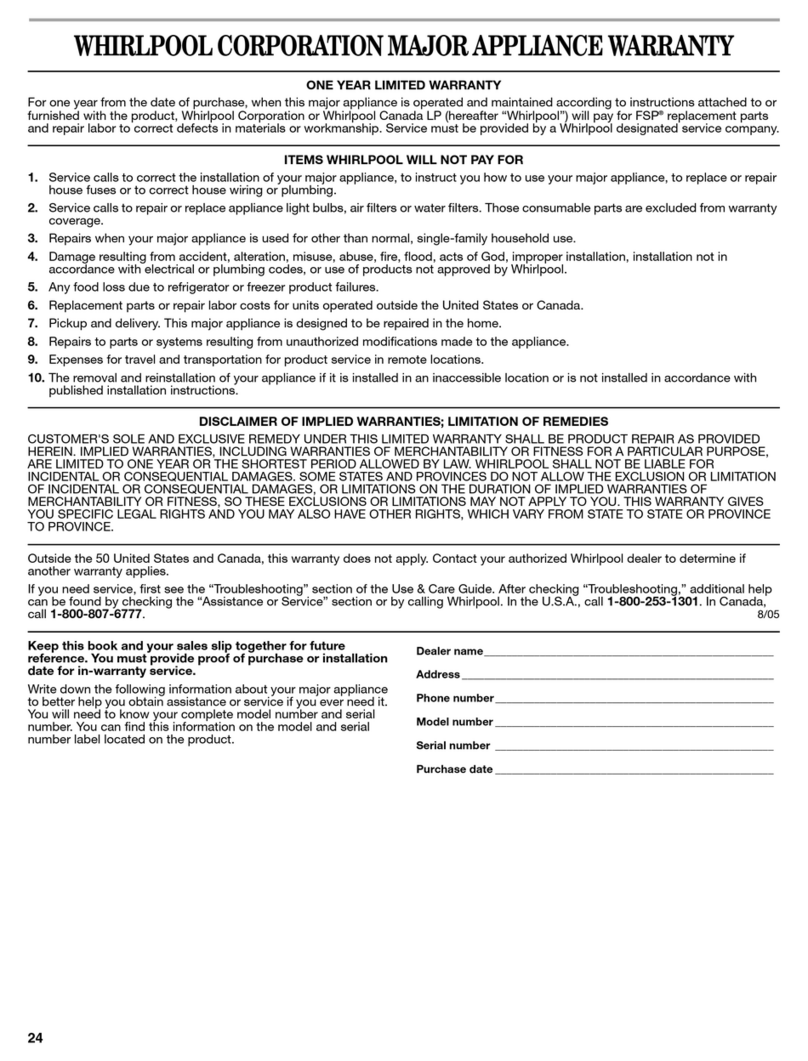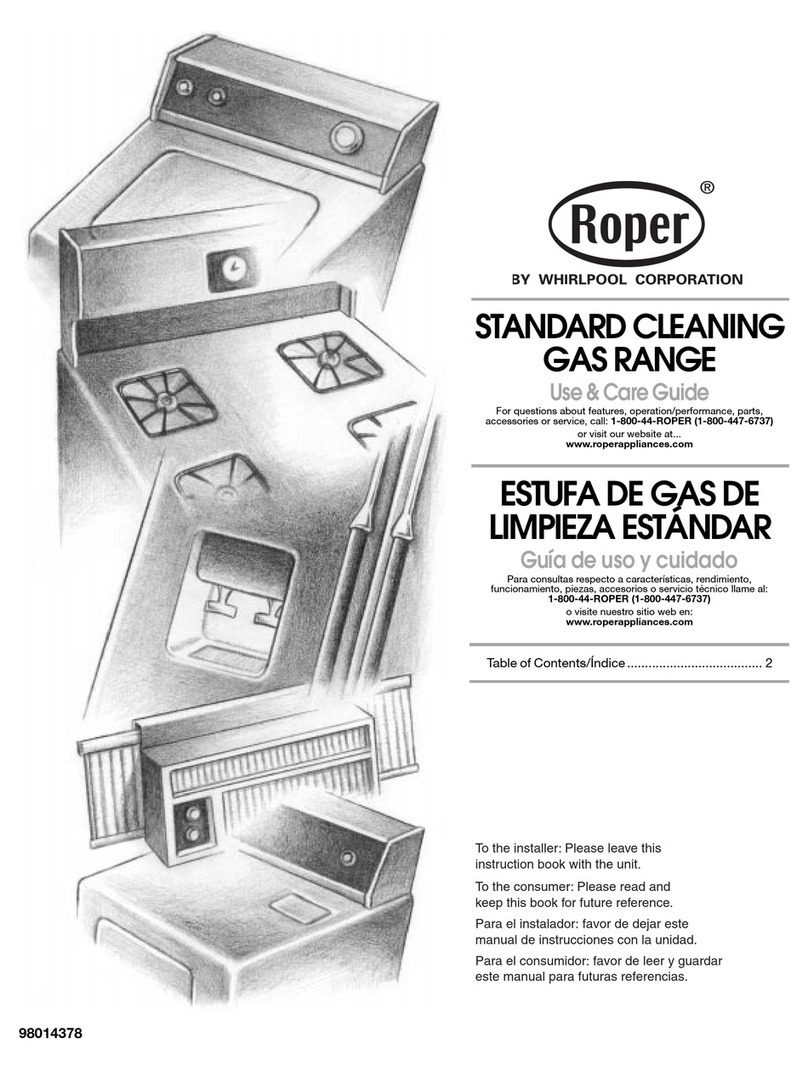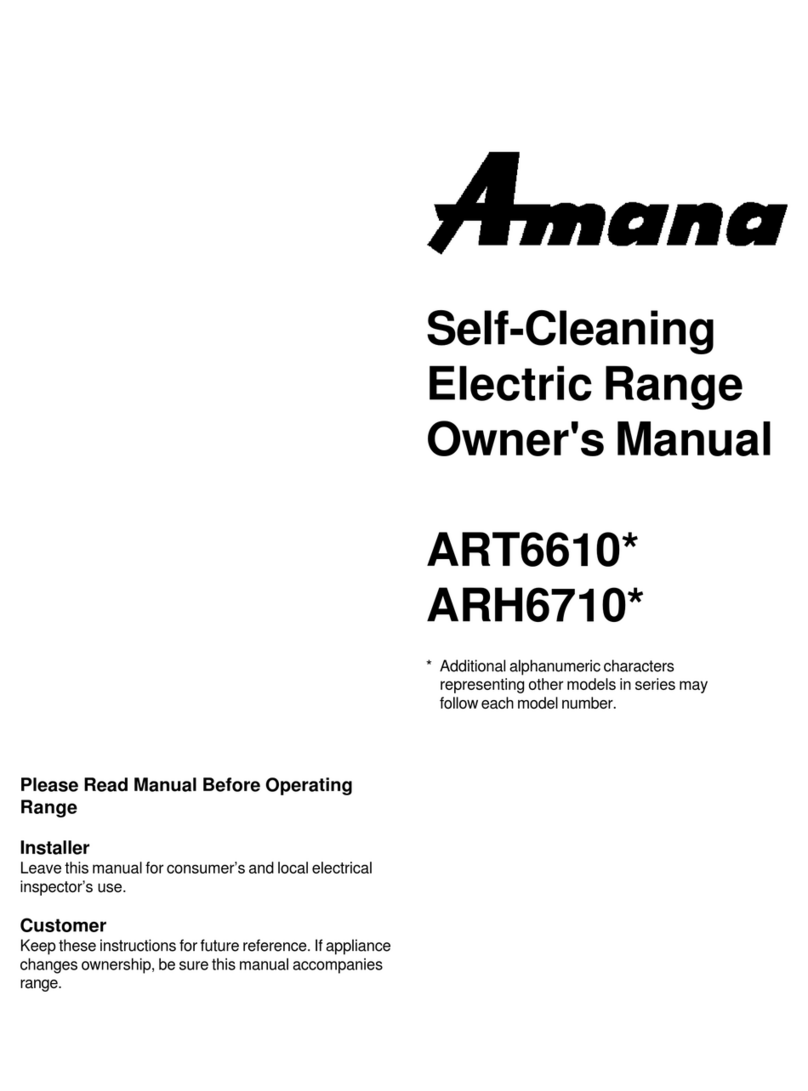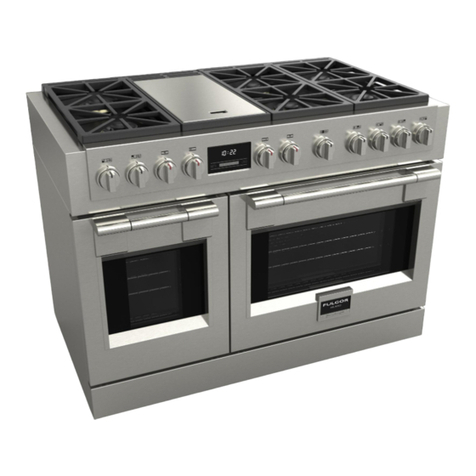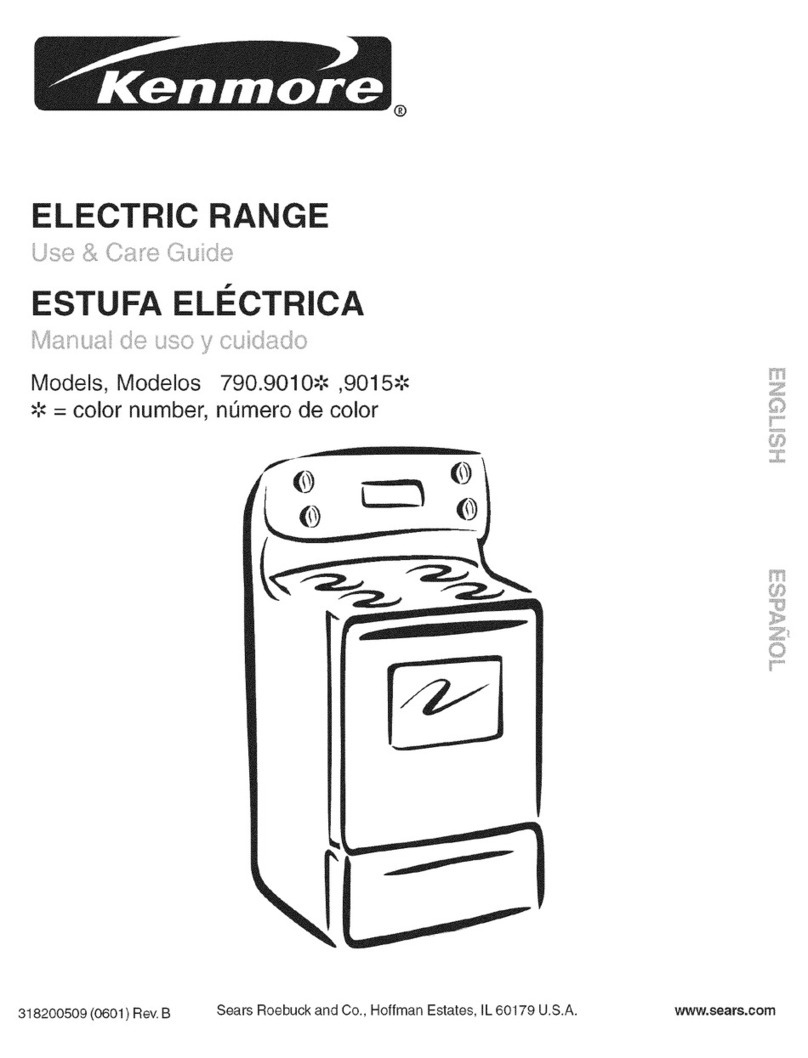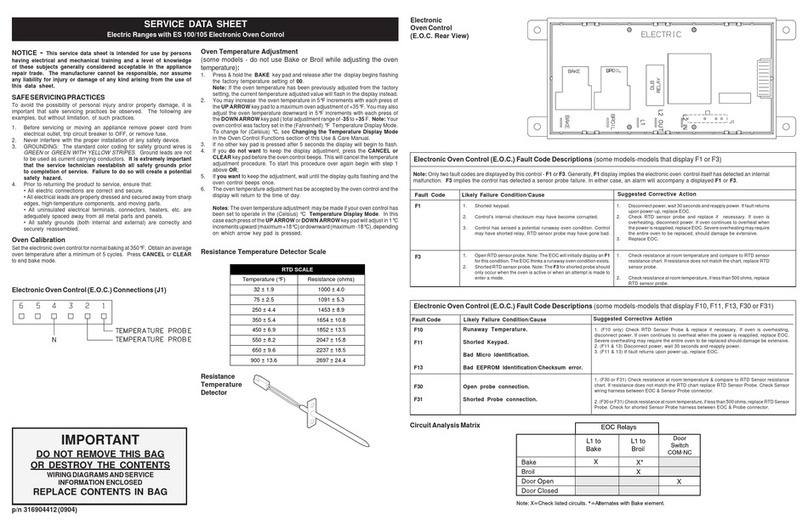2 Operating Instructions STARLINE Ranges
CONTENTS
Page
1. For your safety .................................................................................................2
2. Individual cooking plates ..................................................................................3
3. Large cooking plate MONOSUPERTHERM.....................................................4
4. Ceramic hobs...................................................................................................8
5. Induction cooking plate THERMINDUC..........................................................11
5.1. Normal induction range.......................................................................11
5.2. Full-surface induction range................................................................13
5.3. Errors ..................................................................................................14
6. Steel grill, griddle and roasting plates.............................................................15
7. Bain marie......................................................................................................18
8. Hot cabinet.....................................................................................................20
9. Electric roasting and baking oven...................................................................21
10. Additional equipment......................................................................................23
11. General informations......................................................................................25
FURTHER DOCUMENTATIONS
Installation instructions .....................................................................................72.3738
Service Manual.................................................................................................72.3840
Service Manual Induction .................................................................................72.6479
Spare parts list STARLINE LARGE.................................................................72.3090
Spare parts list STARLINE COMPACT ...........................................................72.3780
SERIAL NUMBER of the appliance YWWXXXXX
The serial number is marked on the type plate. The 8 digits give following information:
Y last digit of the year of production
WW week of production
XXXXX running number
The symbol on the product indicates that this product should not be treated as domestic waste, but must be
correctly disposed of in order to prevent possible negative consequences for the environment and the human health.
Regarding the recycling of this product, please contact the sales agent or dealer of your product, your after-sales service
or the appropriate waste disposal service.
1. FOR YOUR SAFETY
The installation, adjustment and initial operation of the
appliance must be carried out by an authorised
serviceman.
The appliance has been approved only for supervised
operation by trained persons.
The appliance must be used only for cooking food in
commercial kitchens.
The appliance must not be put into operation until the user
has become familiar with its operation.
The Operating Instructions and the related safety
precautions must be followed exactly.
Follow strictly the attention and warning label indications
on the appliances.
Closed containers (jars, cans, bottles, tubes, etc.) must
not be heated owing to the danger of bursting and causing
injuries.
To secure the users' safety the appliance has to be
regularly checked and serviced.
The manager is responsible for ensuring that all
components relevant for safety (thermostat, excess-
temperature thermostat) are in perfect working order at all
times. The operating condition of these components must
be examined by an authorized technician at least once a
year and any defects remedied if required.
Maintenance work and other adjustments are to be carried
out only by authorised servicemen and according to the
valid instructions.
To avoid damages of the appliance do not let water flow
from the mixing faucet unit onto the cooking plates.
Cleaning and maintenance has to be done only when the
appliance is cold.
Parts requiring replacement are only to be replaced by
original spares. Internal parts are only to be changed by
an authorized serviceman.
In the event of a permanent fault which interferes with
operation, the appliance must be switched-off and must be
disconnected from the power supply. The Customer
Service must be contacted in order to eliminate the fault.
The appliance must not be used until the fault has been
eliminated.
The operator of this appliance is responsible for total observation of the national regulations concerning operating
safety.
